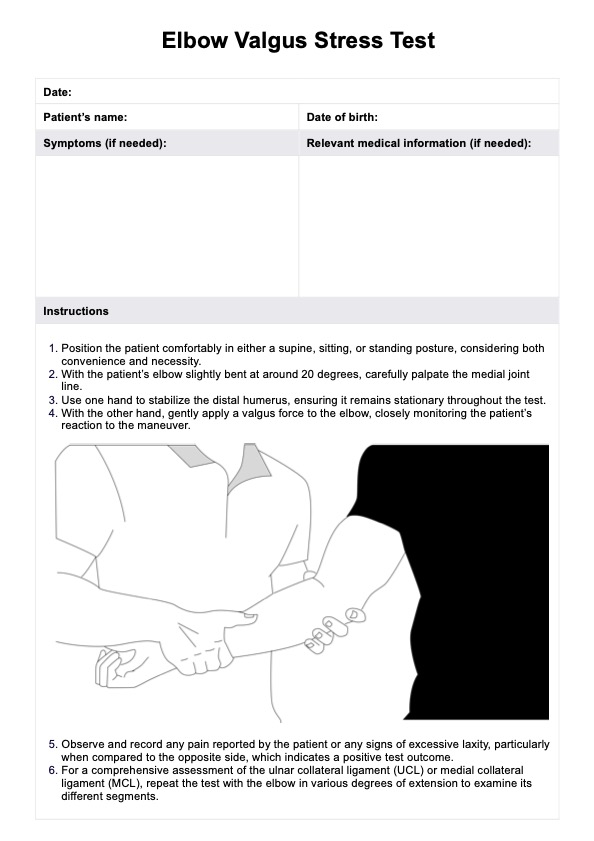The medial collateral ligament (MCL) and the ulnar collateral ligament (UCL) are the same ligaments, referred to by different names. Located along the medial joint line of the elbow, it plays a vital role in maintaining elbow stability by preventing excessive lateral displacement of the ulna.

Elbow Valgus Stress Test
Better assess the stability and integrity of your patient's UCL or MCL with an Elbow Valgus Stress Test. Get a free PDF template and example in this guide.
Use Template
Elbow Valgus Stress Test Template
Commonly asked questions
Yes, ulnar collateral ligament (UCL) injuries can significantly impact elbow extension and stability. Injuries to this ligament can result in pain, weakness, and limited range of motion in the elbow joint.
Yes, elbow flexion and supination can also be impacted by UCL injuries. When the ligament is damaged, bending the elbow or rotating the forearm can be difficult.
EHR and practice management software
Get started for free
*No credit card required
Free
$0/usd
Unlimited clients
Telehealth
1GB of storage
Client portal text
Automated billing and online payments











